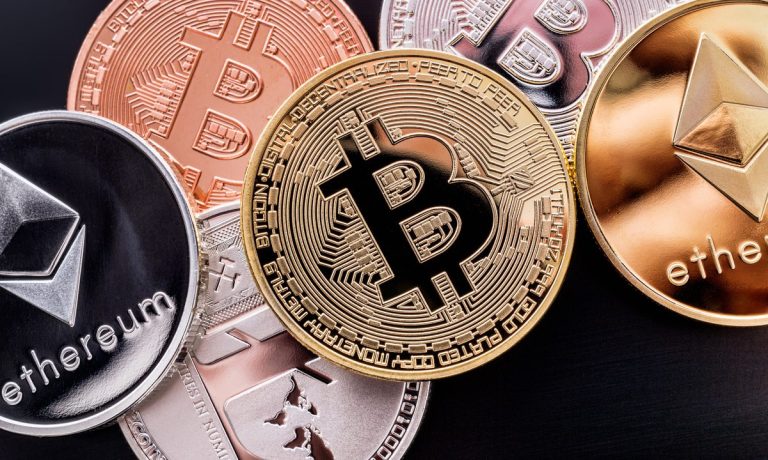
In life there are no certainties — except uncertainty. Except, maybe, when it comes to cryptocurrency, where the certainty is that more regulation looms.
Earlier this week, Securities and Exchange Commission (SEC) Chairman Gary Gensler said at a forum that there needs to be more “investor protection” within the cryptocurrency sphere. He stated explicitly that the environment is more like “the Wild West.”
See also: SEC Chair Gensler Wants More Crypto Oversight Authority
He said at the forum that he remains “technology agnostic” but said that there needs to be a discussion about what the correct regulatory framework for cryptos would be.
Delving into his remarks at the forum, we can see the key areas of concern in tackling and taming the “wild west.” It’s interesting to note the importance in what he didn’t say — and the topics he did not address. Taken altogether, the “said and the unsaid” point toward a roadmap of sorts on how the SEC might proceed to gain a further regulatory grasp of cryptos.
An Unofficial Take?
First thing’s first. He said at the outset of his remarks at the Aspen Security Council that his views in that speech were his own “and I’m not speaking on behalf of the Commission or the SEC staff.” We contend that when the head of a regulatory body speaks on the record, his remarks will be parsed (and of course they are being parsed here), and crypto firms and traders will act accordingly. In addition, as head of the SEC, Gensler has the power at his disposal to help shape regulatory approaches.
Sheer Size, Rapid Rise
His remarks traced the development of bitcoin and beyond, where we now have a market that features 77 crypto tokens — bitcoin, yes, but scores of others — with market capitalizations of more than $1 billion each in just 13 years since bitcoin debuted.
Not A Unit Of Currency (But Digital Fiat Exists)
But amid that heady rise, he said, no crypto fulfills the three functions of money: a store of value, unit of account, and medium of exchange.
“Primarily, crypto assets provide digital, scarce vehicles for speculative investment. Thus, in that sense, one can say they are highly speculative stores of value,” he said, adding that “these assets haven’t been used much as a unit of account.” Where they have been used as mediums of exchange, he said, it’s been to skirt regulators in various anti-money laundering efforts, and for ransomware.
Those are telling concerns. Gensler’s position that bitcoin et al seem to be part of a web of shadowy activities rather than fully integrated into commerce speaks to concerns about using those coins in commercial and retail settings.
He noted, too, that we already have “digital public monies” tied to the dollar, the euro and other major world currencies.
Though the SEC’s job is to regulate investments and investment exchanges and protect the parties trading between one another, this statement (though it touches on payments, which would be part of the Fed, the Treasury, the IRS and OCC and other agencies’ purview) may hint that digital central bank currencies (CBDCs) are the way to go, at least in Gensler’s eyes. And by extension, a whole-hearted embrace oof CBDCs might marginalize bitcoin and others’ push into more transactional settings.
An Eye On Investment And Speculation — Platforms, Too
Gensler stated, too, that for the SEC, “at our core, we’re about investor protection,” and against that backdrop sounded an alarm: The crypto space is marked by “fraud, scams, and abuse in certain applications.” The tokens themselves fall under the heading of “investment contracts.”
The goal of those contracts is to gain profits. Under that definition, the SEC has authority to regulate those tokens — and the platforms, too. Because the platforms exist as locations where people trade tokens and lend them, this is security-related activity, so the SEC can regulate these stakeholders, where the platforms are 24/7 and do not have brokers.
The Stablecoins
Stablecoins, used in crypto-to-crypto activity, he said, are the dominant feature of trading on cryptocurrency platforms, he said — and are thus the way to sidestep banking and other regulations.
We note that this may set up a bit of controversy and debate, where stablecoins are used in trading, yes, but are also used, increasingly, as payment vehicles. As noted in this space in recent months, firms such as Visa and Mastercard have been exploring stablecoins’ use in payments. Visa, in one example, has been adopting USDC as a settlement technology across its core network. And in an interview with Karen Webster, Circle CEO Jeremy Allaire, whose firm issues USDC stablecoins, said we’re moving closer to a tipping point toward cryptos’ embrace in commerce.
See also: The Crypto Economy Prepares For Its Broadband Moment
Finally, Gensler urged that there be action from “Congressional authorities to prevent transactions, products, and platforms from falling between regulatory cracks.” Legislators should focus on crypto trading, lending and DeFi, he said — not explicitly mentioning payments. But we’ll wager payments, by necessity, will be front and center too.